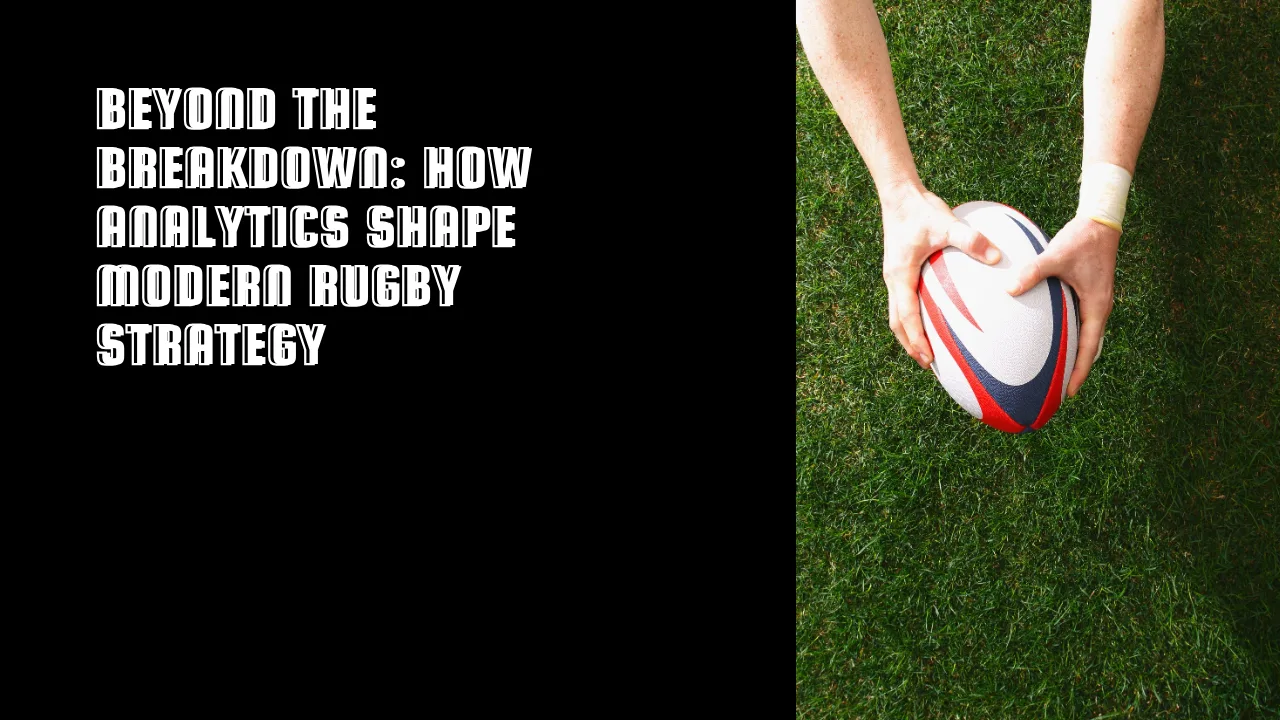Modern rugby has transformed from a sport reliant on intuition and tradition into a data-driven spectacle where every tackle, pass, and territorial gain is meticulously tracked.
Professional coaches commonly rely on performance analysis and metrics to help make decisions regarding their practices, selection, and tactics, with analysts playing an integral role within the high-performance environment. This analytical revolution extends far beyond basic counting stats.
Key Performance Metrics
The cornerstone metrics that define modern rugby analytics extend well beyond traditional statistics. These encompass both physical and tactical indicators that paint a complete picture of team performance:
| Metric Category | Key Indicators | Coaching Application |
| Territorial Control | Metres gained, territory percentage, field position | Game tempo management and tactical kicking strategies |
| Defensive Efficiency | Tackle completion rate, dominant tackles, breakdown turnovers | Defensive system optimisation and player positioning |
| Attack Effectiveness | Line breaks, offloads, gainline success | Attacking pattern development and support play |
Defensive Analytics and Tackle Effectiveness
The defensive side of rugby presents perhaps the most quantifiable aspects of performance analysis.
Winning teams consistently demonstrate higher tackle completion rates compared to losing teams, highlighting the critical importance of defensive solidity in match outcomes. However, modern analytics delve deeper than basic completion percentages.
Sophisticated tackle classification systems now rank defensive actions as dominant, complete, or passive, providing coaches with a nuanced understanding of defensive quality.
These classifications, combined with turnover data, offer a more comprehensive measure of defensive ability than traditional tackle counts. This approach recognises that not all tackles are equal in their contribution to team success.
GPS Technology and Player Monitoring
GPS technology uses receivers and satellites to determine relatively exact positions of receiving devices, with modern devices sampling at rates of 10Hz or higher for improved accuracy.
This technological advancement has revolutionised how coaches monitor player workloads and prevent injuries whilst optimising performance.
The implementation of GPS tracking provides coaches with unprecedented insight into player movement patterns and physical demands.
Key metrics include distance covered per session, session duration, and distance covered in each speed zone, with high-speed running typically accounting for around 10% of total running in both training and matches.
Training Load Management
Effective workload monitoring requires a sophisticated understanding of acute to chronic ratios, helping coaches balance training intensity with recovery requirements.
By taking the average workload over the last four weeks and comparing it to the current week’s load, coaches can identify players at risk of overtraining or injury.
The following speed zone classifications help coaches understand training intensity:
- Walking/jogging: <2–3 m/s.
- Moderate running: 3–5 m/s.
- High-speed running: >5–5.5 m/s.
- Sprint: >7 m/s (elite thresholds may differ by position).
This data enables coaches to replicate match demands during training whilst ensuring players maintain optimal physical condition throughout the season.
Tactical Intelligence Through Data
Modern rugby analytics extend far beyond individual performance metrics to encompass team-level tactical intelligence. Winning teams demonstrate superior attacking capabilities and offloads. These patterns provide coaches with evidence-based frameworks for developing attacking strategies.
Much like rugby fans turn to trusted data platforms for clarity and confidence, some sports enthusiasts explore Best Online Pokies & Reviews from dedicated review sites, which offer impartial slot evaluations and demo play.
Back to rugby analytics, this quest for reliable information drives the continuous refinement of metrics that inform coaching decisions.
Opposition Analysis and Game Planning
Modern coaching preparation involves a comprehensive analysis of opposition patterns and tendencies. Analysts not only analyse all aspects of their team’s performance but also aim to detect the strengths and weaknesses of their next opposition for coaches to use in their game plan.
This dual focus enables teams to develop highly specific tactical approaches that maximise their chances of success.
| Analysis Focus | Data Points | Strategic Application |
| Set-piece Performance | Lineout success rates, scrum penalties, conversion rates | Targeting opposition weaknesses in set-piece situations |
| Phase Play Patterns | Ruck speed, passing patterns, attacking sequences | Developing defensive systems to counter opposition strengths |
| Territorial Preferences | Kicking strategies, field position usage, scoring zones | Field position management and territorial control |
Real-Time Analytics and Match-Day Applications
The integration of real-time analytics into match-day operations represents the cutting edge of rugby performance analysis. Any time the camera pans up to a coach during a match, they will always be flanked by multiple experts on laptops carrying out live match analysis.
This immediate feedback allows for tactical adjustments during matches based on emerging patterns and trends.
Live data collection encompasses everything from player positioning to impact forces, providing coaches with comprehensive situational awareness.
Teams can monitor player fatigue levels, identify emerging tactical patterns, and make informed substitution decisions based on real-time performance data rather than subjective observations alone.
Technology Integration and Future Developments
The All Blacks adopted SAS Visual Analytics in 2013 as their main reporting tool, enabling them to obtain a formal data management process that consolidated all real-time match data, post-match data, and data retrieved through third-party providers in one unified platform.
This integrated approach represents the gold standard for professional rugby analytics implementation.
Advanced analytical platforms now incorporate machine learning algorithms that can identify subtle patterns in opposition play, enabling coaches to develop more targeted game plans.
These systems can analyse thousands of plays across multiple matches, identifying subtle patterns that might not be obvious to the human eye.
The following technological advances are shaping rugby’s analytical future:
- Artificial intelligence pattern recognition for opposition analysis
- Predictive injury modelling based on workload and recovery data
- Automated video analysis reduces manual coding requirements
- Integrated biometric monitoring combining GPS with physiological markers.
The Human Element in Data-Driven Rugby
The most effective analytical programmes recognise that data enhances rather than replaces coaching intuition and player instincts.
Coaches described the necessary attributes of highly effective analysts as possessing intimate knowledge of the game, creativity, communication skills, and an ability to manage relationships with key stakeholders.



